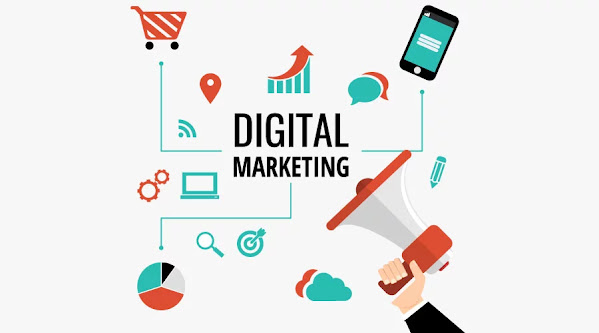ARESYNC | Web Development Technology Trends
Web Development Technology Trends
Top 10
Web Development Technology Trends for 2023 In the digital age, tools and
technologies are crucial to business growth and success. In this context, web
applications and websites have become essential tools for companies looking to
grow their businesses. Whether sharing vital information or selling products
and services, an online presence is necessary.
Mobile
apps are top-rated, but with 143.6 billion (approximately) users, it can be
challenging to market and install them on their devices. On the other hand, web
apps allow businesses to deliver content without restrictions since users don't
have to download or install anything.
However, Web Design and development technology trends change yearly based on user needs
and technological advances.
Here
are some major web development trends expected in the coming years.
Web
Development
Web
development is planning, designing, developing, and maintaining websites and
web applications hosted on servers, in the cloud, or on local hardware. The
term "web development" can refer to anything from simple text-based
websites to complex web applications. The term "web development" can
refer to anything from simple text-based websites to complex web applications.
Web:
refers to anything that runs in a browser on the internet, such as web pages,
websites and web applications.
Development
refers to creating a web application or website from scratch.
There
are two main types of Web Development that we deal with
Front-end
development: responsible for the look and feel of websites and the design of
graphical user interfaces using programming languages such as HTML, CSS and
JavaScript, as well as frameworks.
Back-end
development: focuses on the performance of applications and websites. Back-end
development refers to server-side development and includes work on web
architecture, databases, logic, scripts and servers. The languages used are
Java, Python, PHP and C#. Back-end development consists of back-end activities
while performing each website function.
For
many, staying on top of technology can be difficult. That's why we've compiled
a list of the most important trends in web development in 2023.
Two-factor Authentication
Also
known as two-factor or two-step authentication, this security process involves
two different ways for users to verify their identity. It is used to protect
users' credentials and resources.
With
the recent increase in cyber attacks, two-factor authentication adds an extra
layer of security to the authentication process of a website or web
application. It makes it more difficult for hackers to gain unauthorized.
Two-factor
authentication requires multiple authentication factors (for example,
biometrics or security tokens such as a face or fingerprint) and a password.
Therefore, even if the password is compromised, it cannot be used alone to
bypass authentication.
SSO Through a Trusted Certificate Authority
Single
sign-on (SSO) is another authentication method in which users use credentials
such as a fingerprint, password or one-time password to access various
applications. However, this type of authentication is only available on
LinkedIn, Google, Twitter and Facebook.
Once
the access data is verified, these organizations provide a token that securely
encrypts all user information. In addition, when a web application or website
processes this token, it ensures a trusted party sent it and did not contain
any errors. The user can switch between authentications only if the receipt
comes from a trusted source.
SSO
allows organizations to solve problems such as fragmentation, security and
compliance issues, access logs, password fatigue and performance.
Voice Control
According
to Markets and Markets, the voice assistant market is expected to reach $11.2
billion by 2026, up from $2.8 billion in 2021.
Search
plays a vital role in many apps to help users find what they are looking for
hands-free. In voice-enabled apps and websites, users say what they want once
the voice assistant is activated, and an AI-based algorithm searches for and
returns the requested information.
Dynamic User Interface Design
Interactive,
animated, and fast-loading design is essential for web applications and
websites, as it helps develop an exemplary user interface. Static methods were
initially used, but users expect responsive designs with animations and
transitions on web pages as technology advances.
Animated
user interface design is integral to the user experience that brings web
applications and websites to life. The Sass library, with its two dozen
built-in classes for animations and transitions, makes prototyping efficient,
fast, easy and straightforward.
Integrating
an animated user interface into web applications will become a trend (if done
right). Adding a credible source of visual storytelling can help companies
engage their users.
API-centric Approach to Development
Although
APIs have been around for more than 20 years, the concept of "API
first" has become widespread in the web development industry, and the
number of developers using them continues to grow.
Application
programming interface (API) refers to an approach to software development that
involves creating APIs before writing code. As organizations continue to
develop web applications using cloud technologies and implement container
process orchestration, continuous delivery and microservices architecture,
knowing where to start is essential.
When
developing web applications, developers must ensure that the data that powers
the system is provided in the form of APIs to ensure the predictability,
quality and stability of multi-user web applications.
Developing
a web application with an API-first approach creates a contract that predicts
how the API will interact with other software, regardless of the programming
language used.
The
API-first approach promotes system scalability, high availability, fault
tolerance, flexible upgrades and reduced development costs.
Metaverse.
The
Metaverse is another trend that will emerge in 2023. It is a blockchain-based
distributed public ledger that provides a decentralized platform for the
real-time exchange and transfer of assets on the blockchain. Metaverse uses
intelligent contracts to publish and transfer digital records and assets.
Potential
use cases for Metaverse include improving the security, performance,
accessibility, interactivity and immersion of web applications.




Comments
Post a Comment